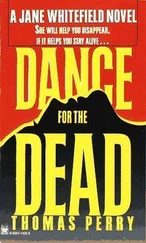“Hold it,” she said, and the two young men stopped and looked at her, puzzled. She spoke loudly enough so the policeman would hear too. “His room’s been changed. Let’s get him up to the fifth floor so he’ll be near the cardiac unit.”
The two orderlies wheeled the gurney out of the room, then pushed it to the elevator. Jane was aware of the policeman standing beside her in the elevator, but didn’t look into his eyes. He was young, at least a head taller than she was. His belt was so festooned with equipment—gun and ammunition, handcuffs, folding knife, and pepper spray, all in their own leather holsters—that she heard leather creaking every time he shifted his weight.
The door opened and the orderlies pushed the gurney out into the fifth floor hallway and followed Jane to room 5895. She opened the door and said to the policeman, “Excuse us for a moment.” He lingered in the doorway for a second to glance into the room, then stepped aside.
Jane let the two orderlies lift the old man onto the bed, then said, “Thanks, guys.”
One of them whispered, “Did he really kill somebody?”
Jane said, “That’s what I hear.” Her voice was an uninterested monotone that made the two men retreat out the door. Jane pulled the privacy curtain to screen the patient’s bed from the door, then knelt down and released the brake on the wheels, and did the same for the bed with the dead man in it. Then she pushed the patient’s bed aside, pushed the dead man’s bed into its place, and pushed the living patient to where the dead man had been.
She looked around her until she found the oxygen mask, slipped it onto the dead man’s face, slipped a surgical cap over the dead man’s head, and looked at him. He was lying peacefully with his eyes closed. His hair and lower face were invisible. Jane began to search in the drawers around the room. At last she found what she had been looking for: two long, white Velcro strips. She tried to lift the dead man’s arm, but it was stiff. She tugged him closer to the railing on the bed and tethered his arm to the rail at the wrist, then did the same to the other wrist.
She returned to the living patient by the window, then heard a knock on the door. She rushed to open it. The policeman was standing in the doorway, looking a bit sheepish. “I wondered—”
“Just a few more minutes,” she said.
“I’m supposed to be sure he’s restrained.” He was fiddling with his handcuffs.
“Oh, you can’t use those,” she said. “He’s been in surgery, and they’re not sterile. He can’t get out of the regular wrist restraints we use.” She stepped aside to let the policeman look in and satisfy himself that the dead man in the bed was not going anywhere. He nodded. “I’ll be right out here.”
She closed the door and went to the bed by the window. She leaned down, and stared into the open eyes of Richard Dahlman. The pupils were dilated and the face had a drug-induced calm. She took the mask off her face and whispered, “You awake?”
“Yes,” he said.
“Did Carey tell you about me?”
“Yes.”
“Then sit up.” She pulled his good arm and watched him strain to raise himself. She felt frightened. He seemed too weak to do anything, but she had to try. She spoke quietly and firmly. “This is going to be hard, so concentrate. We’re going to try standing. If you fall, we’re lost. If you feel faint, warn me.”
She pulled his legs over the edge of the bed so they dangled a few inches from the floor. “Are you ready?”
He seemed to hesitate a long time, his eyes focused on the floor. “Yes.”
She helped him down and held him for a moment. The hospital gown made him look old and frail. He was thin, but his bare back looked soft and boneless, and his buttocks were shrunken with age. She put her left arm around his waist and pulled his right over her shoulder, then began to move. Each movement of Dahlman’s feet was fraught with risk and uncertainty. At first each shuffle gained them only two or three inches, but then something about the feel of the cold terrazzo floor on the soles of his bare feet brought back to him a sense of balance, and his shuffles became steps.
She talked to him in soft murmurs as she moved him into the bathroom. “You can do this,” she said. “I can tell you can. If I sit you on the toilet, can you keep from falling?”
“Yes.”
It occurred to her that his brain might be so far shut down that no matter what a human voice said, he would answer “yes,” but that didn’t change what she had to do. She eased him down on the toilet. “Just sit here for a few minutes, and I’ll be back to get you out.”
She closed the door of the bathroom and returned to the doorway. She opened the door to the hallway and beckoned to the policeman. He stepped inside.
“We’ve got a little problem,” she said. “This room doesn’t have a good oxygen connection. We’ll have to move him back to the first room. Can you get me that gurney?” She pointed down the hall at the gurney she had left there.
The young policeman looked pleased. At last, he had something to do. He hurried down the hall and brought it back with him into the room. He prepared to reach for the body on the bed, but Jane stopped him. “Don’t touch,” she said. “You’re not wearing scrubs. Go out and wait for me.”
She pushed the gurney up beside the bed, removed the restraints from the dead man’s arms, lowered the railing, and tugged the body onto the gurney. She re-adjusted the oxygen mask and the cap, restrained the stiff arms again, and took a couple of breaths.
Jane pushed the gurney along the hallway. She and the policeman moved the gurney into the elevator again, got out on the third floor, and pushed the gurney into room 3205.
Jane reversed the procedure she had followed the first time, hauling the body off the gurney onto the bed, pulling the covers over it, and then closing the curtain before she opened the door for the policeman. She said, “He’s resting peacefully. Make sure that nobody disturbs him unless they have explicit permission from Dr. McKinnon.”
“That’s what I’m here for,” said the policeman.
Jane wheeled the gurney down the hallway, into the elevator, and back to the room on the fifth floor. She opened the bathroom door and turned on the light with trepidation. She had been afraid that Dahlman would be lying on the floor unconscious, but he simply turned and blinked at her.
“All right,” she said. “Climb aboard.”
She helped him sit on the gurney, then swung his legs up and helped him lie down. She pushed the gurney back to the elevator, then punched the button for level B, below the ground floor, and pushed the gurney into the outpatient recovery room. She took three deep breaths, then turned on the light in the cubicle she had visited earlier.
“Time to get up,” she said. She eased Dahlman’s feet to the floor, then helped him to the chair. She retrieved her bag from the cabinet where she had hidden it. “Just rest and get your bearings, and let me do all the work.” She knelt in front of him and slipped the shorts and pants over his feet and up to his knees, then put on the socks and shoes. She removed the hospital gown and gently slipped the shirt on over his useless left arm, then his right, and buttoned it.
His voice seemed to acquire some authority. “There will be nurses up on the fifth floor looking for me in a minute.”
“No, there won’t,” she answered quietly. “They didn’t know you were coming.”
“Of course they did.”
“Believe me, they didn’t.”
“But I’m a doctor. I know how—”
“Tonight you’re not a doctor, you’re a passenger. Do exactly as I say and you’ll be outside in a minute,” she said. “Do anything else, and you won’t.” She slipped the necktie over the back of his neck and quickly tied it.
Читать дальше












